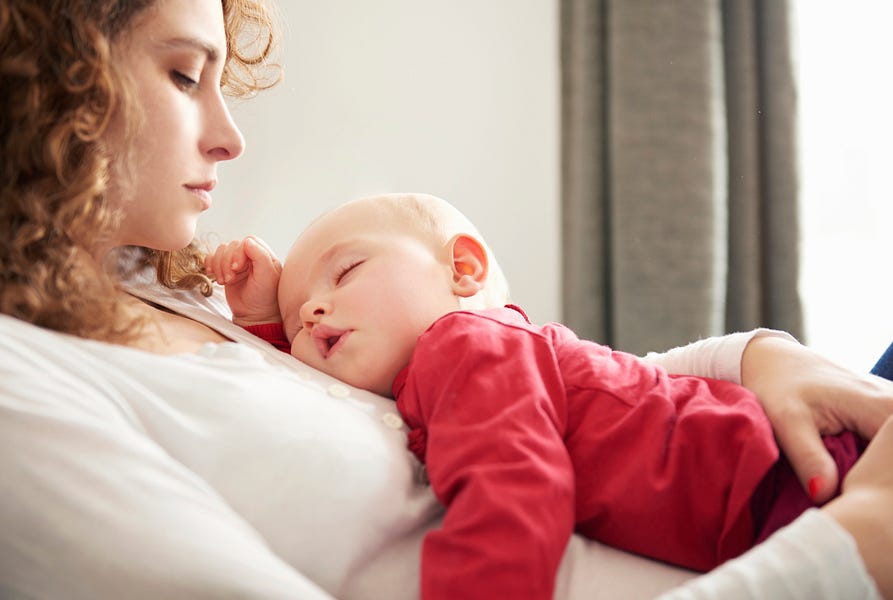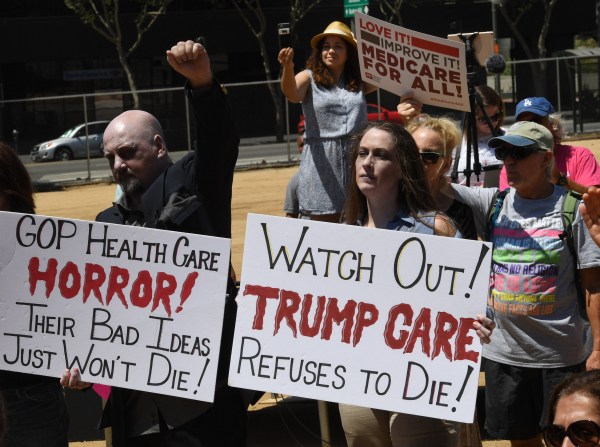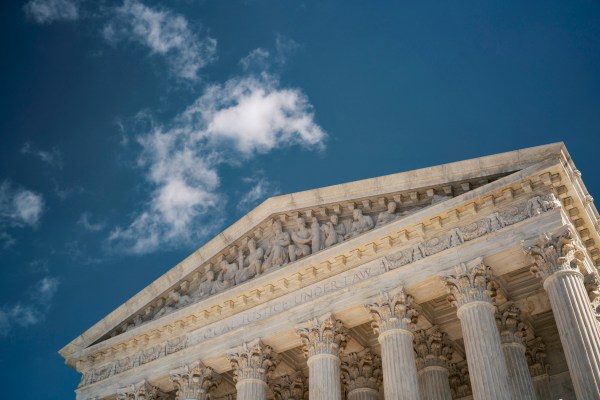Since a draft opinion written by Justice Alito indicating that the Supreme Court would overturn Roe v. Wade was leaked, much of the debate has been philosophical, dealing with women’s bodily autonomy versus the rights of the unborn, and what kind of different laws states might pass now that that the issue of abortion has been returned to elected officials. However, it’s also an issue with economic consequences. State-level abortion bans will affect the economy as a whole and women in particular in several different ways.
What effect, exactly, does legal abortion have on women’s ability to partake in the economy?
This is a tricky question. One may think that studying women’s labor force participation, salaries, and years of education before and after Roe v. Wade would provide some clues, but correlation does not equal causation. Many things changed during the 1970s that affected women’s roles in the economy. Abortion is one variable, but attributing the entire post-1973 rise in women’s labor force participation to legal abortion would be intellectually dishonest.
In recent decades, economists have approached this is through so-called natural experiments: Five states and the District of Columbia had already legalized abortion before Roe v Wade. Comparing the outcome for women in these states after abortion was legalized compared to the rest of the country (or comparing each state to a similar state that did not have legal abortion pre-Roe) can, at least in theory, allow us to isolate the effect that abortion legalization has on women in the economy and society as a whole.
Using this method, legalizing abortion reduced the number of teen mothers by 34 percent and teen brides by 20 percent, while maternal mortality among black women decreased by 30 to 40 percent.
Meanwhile, using the same methodology, economic researchers have found that legalized abortion increased women’s schooling and employment rates, as well as labor force participation in general (especially for black women). Legal abortion also increased the share of women working in jobs covered by social security.
Given that natural experiments are held in high regard for their ability to establish causation rather than just correlation, one may think that this would settle the topic. Things, however, are more than a tad more complicated.
The main flaw with relying on these studies as an indicator for what kind of effect reversing Roe v. Wade may have on women is that they all rely on very old data. In 1970, an unplanned pregnancy that led to a woman becoming a single mother was devastating. The stigma was severe. There were few options for single mothers to continue with their education, at least not without relying on help from family, and single motherhood stifled career options. While there is little doubt that motherhood still imposes a cost on women’s earnings and career prospects, this cost is not nearly as great as it was 50 years ago.
A half-century ago, women who became pregnant out of wedlock faced immense social pressure to marry the father (though to be fair, men were also reluctantly marched down the aisle in “shotgun weddings”). This affected their economic outlook because “marriage bars” were still common. Such bars were outlawed by Title VII of the 1964 Civil Rights Act, but it took time for employers to change their attitudes. An accidental pregnancy that caused a spontaneous, socially mandated wedding could very well force a woman out of the labor force. This is no longer the case.
Furthermore, discrimination against pregnant women remained legal until 1979. At the time Roe v. Wade was decided, a woman could still be fired legally if she became pregnant. This is part of what drove demand for abortion among educated women, as pregnancies were fully capable of ending promising careers. While no one can say that pregnancies do not affect career development, it is nowhere near as severe today as it was back then.
The second problem with these studies that are meant to instill the notion that a return to a pre-Roe America would be devastating to women in the economy, is that natural experiments by their very nature struggle with finding a proper control group. Out of the five jurisdictions) that had legalized abortion prior to Roe, four of them—Alaska, California, New York and Hawaii—had and still have economies that look rather different from the rest of the country (the “control group”), with the latter three having a far greater service and professional sector than most other states. This is relevant as pregnancies and marriage mainly caused career disruption (or worse) to women in these sectors. It is quite likely that the natural experiments overstate the effect, as the control and treatment groups are not actually identical.
Third, in addition to changes in cultural attitudes toward single mothers and mothers in the workforce, technology has also made it easier to combine parenting with working. The pandemic has given a significant boost to the already-increasing number of remote jobs, which makes it easier for mothers to stay in the labor market.
Fourth, women have far greater access to contraceptives than they did in 1970. Abortion bans are almost certainly going to lead to changes in sexual behavior and risk-taking that were frankly not possible for many Americans back in 1970 when access to contraceptives was far more limited. This will also mitigate the actual impact of any restriction on abortion.
Finally, the pre-Roe abortion bans were far more effective than any modern abortion ban could realistically be. Out of the five states, only one—New York—allowed non-state residents to have abortions. Pre-Roe, if you lived in a state without legal abortion, you could not simply travel to a state where it was legal, as you had to prove residency to be allowed to have an abortion in any of those states except New York. While more than half the states are likely to either ban or restrict abortion, those who do allow it are almost certainly going to allow “abortion tourism.” The effect of abortion bans on women will be smaller because the bans will be less effective (though traveling out of state will be admittedly be more difficult for poorer women).
And this brings us to the real, significant issue that pro-lifers now have to tackle: A post-Roe America needs to become a better place to have a family, and in particular a better place to be a mother. There is an image of Republicans as caring about babies only as long as they are in the womb, subsequently abandoning vulnerable mothers after persuading (or forcing) them not to have abortions. Even if this image is not entirely justified, more must be done to combat it. An America where becoming a mother is an unattractive option will never be able to enforce a ban on abortion.
To start with, a post-Roe America needs legally mandated, paid maternity leave. Only 25 percent of American workers in the private sector work for employees that offer paid parental leave (maternity, paternity or both). The loss of income from taking care of a newborn is a deterrent to having children, and indirectly provides an incentive to violate any ban on abortion. Family leave can be a contentious issue for conservatives, but Donald Trump signed a bill providing for paid parental leave for federal workers during his administration, and this is something that ought to be extended to private sector employees. (Abby McCloskey has written about a proposal that could enjoy bipartisan support for The Dispatch.)
Second, the cost of maternity care needs to be drastically reduced, and ideally such care should be unconditionally free. The prospect of going bankrupt or being indebted for life from medical debt stemming from a potentially complicated childbirth makes abortion more attractive. Even without a European-style universal health care system in the U.S., there are ways to address this, whether by increasing government subsidies to ACA plans, allowing all plans to provide maternity care without deductibles and co-insurance, or by funding maternity care through a separate program.
It’s best to think of children as a public good. Everyone, even the childless, benefit or will benefit from children being born today, as we all eventually end up relying on the existence of future generations, both to provide caretakers and to keep entitlements such as Social Security and Medicare solvent. The U.S. allows its childfree population to free-ride on the parents—enjoying all the benefits of children being around, while carrying hardly any of the costs.
Third, the cost of domestic adoptions must be drastically reduced, and funding for family and child protective services drastically increased. While there is little doubt that CPS agencies often display misguided priorities and in some cases need to be reined in, there is also little doubt that fighting child abuse and neglect is costly. In places where abortion is no longer legal, many more women will inevitably end up giving birth to children they either do not want or are not capable of taking care of. While tax credits cover some of the costs of adoption, couples looking to adopt still have to make significant upfront payments before getting those credits (which again, only cover some of the costs). CPS agencies need to have the resources necessary to monitor and ensure the welfare of at-risk children.
A great danger with the reversal of Roe v. Wade is that Republicans, many of whom have merely paid lip service to the pro-life cause, will fail to understand or fail to accept the magnitude of changes that will need to be made to successfully transition America into the post-Roe era. The backlash may be severe, and the long-awaited overturning of Roe v. Wade could quickly turn into a pyrrhic victory for the pro-life movement, killing its political credibility for time eternal. Pro-life groups, having spent half a century lobbying for the appointment of anti-abortion judges, must now turn their focus to ensuring politicians make the practical changes necessary to make a pro-life America feasible.






Please note that we at The Dispatch hold ourselves, our work, and our commenters to a higher standard than other places on the internet. We welcome comments that foster genuine debate or discussion—including comments critical of us or our work—but responses that include ad hominem attacks on fellow Dispatch members or are intended to stoke fear and anger may be moderated.
With your membership, you only have the ability to comment on The Morning Dispatch articles. Consider upgrading to join the conversation everywhere.